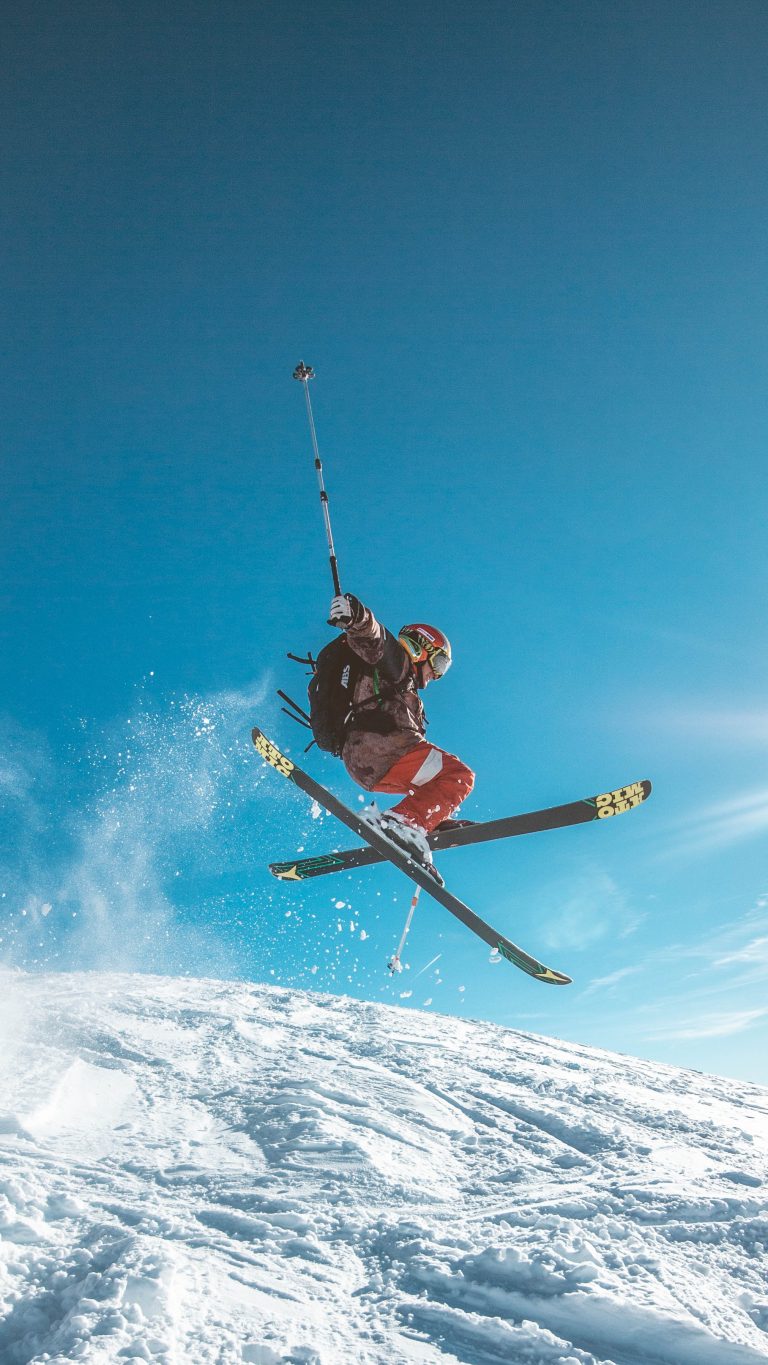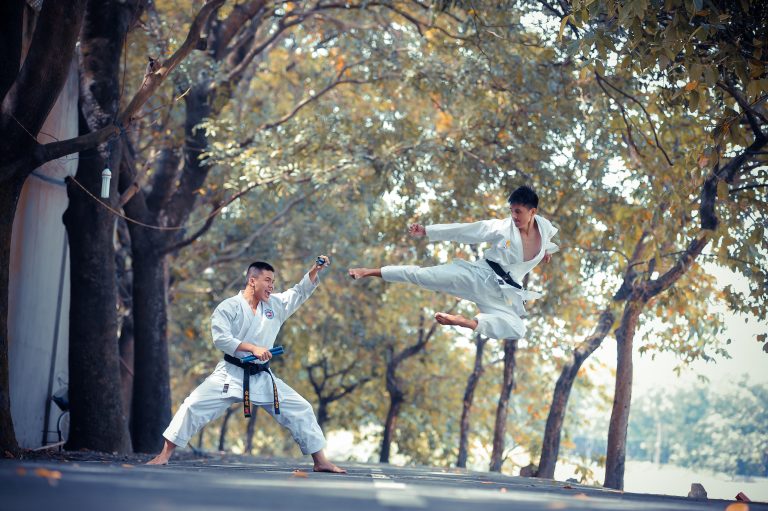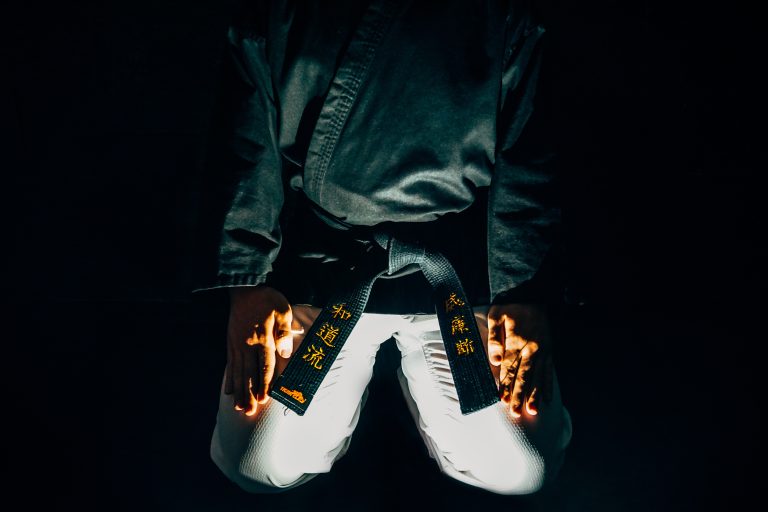Karate Belt Timeline: How Long Does It Take to Get the Black Belt?
Karate is a popular martial art that originated in Okinawa, Japan. It’s not just a sport, but a way of life that requires dedication, patience, and discipline. Karate students follow a specific ranking system that involves colored belts, with the ultimate goal of achieving the coveted black belt. In this article, we’ll explore the karate belt timeline and answer the frequently asked question: how long does it take to get the black belt?
The Karate Belt System
The karate belt system consists of different colors which represent the rank earned by a student. The order of karate belts from lowest to highest is as follows:
1. White Belt
2. Yellow Belt
3. Orange Belt
4. Green Belt
5. Blue Belt
6. Purple Belt
7. Brown Belt
8. Black Belt
Time it Takes to Earn Every Karate Belt
The time it takes to earn a karate belt heavily depends on the student’s dedication, skill level, and the requirements of their dojo or school. However, below is a rough timeline of the time it typically takes to earn each karate belt:
White Belt – Yellow Belt
It usually takes around 2 to 6 months to earn the yellow belt. However, some schools require the student to train for a minimum of 3 months to advance to the next level. During this stage, the student is introduced to the basics of karate, including stances, blocks, and strikes.
Yellow Belt – Orange Belt
It typically takes around 6 to 9 months to earn the orange belt. This is the stage where students start learning katas, forms, and more advanced techniques.
Orange Belt – Green Belt
It usually takes around 9 to 12 months to earn the green belt. The green belt is considered a significant milestone in a student’s karate journey, as it signifies that the student is now an intermediate-level practitioner.
Green Belt – Blue Belt
It typically takes around 12 to 18 months to earn the blue belt. This is the stage where students start perfecting their katas and forms, and begin to specialize in a specific area of karate.
Blue Belt – Purple Belt
It usually takes around 18 to 24 months to earn the purple belt. This stage requires a lot of concentration and dedication, as the student is expected to master their specialized area and begin teaching others.
Purple Belt – Brown Belt
It typically takes around 24 to 30 months to earn the brown belt. This is the stage where the student is considered an expert and possesses a deep understanding of the principles and philosophy of karate.
Brown Belt – Black Belt
It usually takes around 3 to 5 years to earn the black belt. This is the highest level a student can achieve in karate, and it requires a great deal of dedication and hard work. The black belt represents the mastery of all the skills and techniques learned throughout the previous stages.
FAQs about the Karate Belt Timeline
Karate is a Japanese martial art that has gained worldwide popularity over the years. One of the most iconic aspects of karate is the belt system, which represents a student’s progress and skill level. As you advance through the ranks, you’ll achieve different coloured belts, with each level representing a new challenge and a greater degree of mastery.
In this article, we’ll answer some of the most frequently asked questions about the karate belt timeline.
How Long Does It Take to Get a Black Belt in Karate?
One of the most common questions asked by karate students is how long it takes to reach the coveted black belt. The answer to this question depends on a wide range of factors, including your natural ability, the amount of time you dedicate to training, and the style of karate you are learning.
On average, however, it takes several years of dedicated training to achieve a black belt. Most students will start with a white belt, progress through the coloured belts (yellow, orange, green, blue, and brown), before finally achieving the black belt.
What are the Different Colours of Karate Belts?
The colours of karate belts often vary between styles and schools, but the most common progression is white, yellow, orange, green, blue, brown, and black. Some schools may also include additional colours or use a different belt progression entirely.
What is the Criteria for Advancing to the Next Belt Level?
The criteria for advancing to the next belt level can vary depending on the karate style and school. Generally, advancement is based on a combination of factors, including technical knowledge, physical ability, and time spent training. In some schools, students may also be required to take an exam or perform a demonstration of their skills.
Can You Skip Belt Levels in Karate?
While it is possible to skip belt levels in some karate schools, it is relatively rare. Skipping belt levels is usually only allowed in exceptional circumstances, such as if a student is transferring from another school with a different belt system.
What Happens if You Fail a Belt Test?
Failing a belt test can be a frustrating experience, but it’s important to remember that it’s a natural part of the learning process. In most cases, if you fail a belt test, you’ll be given specific feedback on areas that need improvement, and you’ll be allowed to retake the test after a designated period of time.
What is the Highest Belt Level in Karate?
The highest rank in karate is typically the 10th-degree black belt, although some styles may have additional levels beyond this. It’s worth noting, however, that achieving a high belt level is not the ultimate goal of karate – rather, the focus is on self-improvement and the mastery of techniques.
Can Adults Learn Karate or is it Only for Children?
Karate is a martial art that can be practiced by people of all ages, from children to seniors. In fact, many adults take up karate as a way to stay fit, relieve stress, and learn self-defense techniques.
Do You Need to Have Prior Martial Arts Experience to Learn Karate?
No, you do not need to have prior martial arts experience to learn karate. The focus of karate is on technique and self-improvement, and many students begin their training with little or no prior experience.
Is Karate a Competitive Sport?
While karate can be practiced as a competitive sport in some contexts, it is primarily a form of self-defense and personal development. Competitive karate may involve sparring matches, katas, or other forms of demonstration, but the main focus is always on achieving personal growth and self-mastery.
How to Earn Each Karate Belt and Track Your Progress with a Karate Belt Timeline
Karate is a martial art that is focused on self-defense, discipline, and physical and mental strength. It is a journey that takes many years of dedicated training to master. As you progress through karate, you will earn different colored belts, each of which represents a new level of knowledge and skill.
Tracking your progress through each belt level can be a great way to stay motivated and focused on your goals. One way to do this is by creating a karate belt timeline. In this blog post, we’ll guide you through how to earn each karate belt and how to create a timeline to track your progress.
Understanding the Karate Belt System
Karate uses a colored belt system to indicate the rank and progress of a student. The four major levels are white, green, brown, and black. Within each major level, there are usually several sub-levels, indicated by stripes or additional colors.
White Belt
The white belt is the starting point for all karate students. It represents the beginning of the journey. The white belt is often referred to as the „beginner’s belt“. During your white belt period, you will learn the basic movements, stances, and techniques of karate.
Green Belt
After a few months of training and demonstrating proficiency with the white belt techniques, you will be ready to test for your green belt. In addition to the basic techniques, you will learn more advanced movements and stances.
Brown Belt
The brown belt is a significant milestone on the karate journey. At this level, you will be expected to execute all the techniques with precision and power. You will also learn more complex combination moves.
Black Belt
The black belt is the highest level you can achieve in karate. It takes years of dedicated practice and training to earn a black belt. At this level, you are considered a master of the art and a leader in your dojo.
Creating a Karate Belt Timeline
A karate belt timeline is a visual representation of your progress through each belt level. You can create a timeline using a white belt, a piece of string or ribbon, and colored belts. Here’s how to do it:
1. Attach the white belt to a piece of string or ribbon.
2. Loop the string around a post or wall-mounted hook so that the white belt hangs at waist height.
3. Attach the colored belts to the string, in order, as you progress through each level.
4. When you receive a new belt, remove the old one and add the new one to the string.
5. Continue adding belts to the timeline until you achieve your black belt.
6. Share your timeline with your dojo mates and instructors to celebrate your progress.
Conclusion
Earning each karate belt takes hard work, dedication, and a commitment to excellence. Creating a karate belt timeline is a fun and rewarding way to track your progress through each level. By following the steps we’ve laid out in this post, you’ll be able to earn each belt with confidence and build a sense of accomplishment as you move closer to becoming a black belt.
Inhaltsverzeichnis






